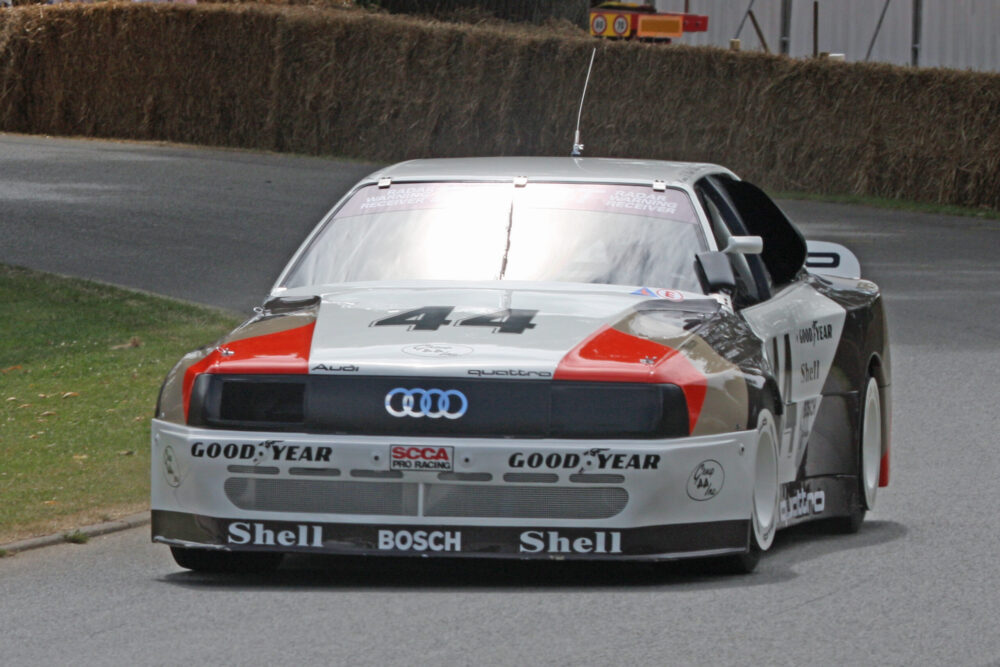The 1988 Audi 200 Quattro Trans Am was So Good, America Banned It from Racing
Facing a PR crisis and plummeting sales, Audi entered American Trans Am racing to boost business. But the 1988 Audi 200 Quattro Trans Am was too good for its own good.
Cast your mind back to 1987. This is post-Oil Crisis America, where the “Golden Age” of Trans Am is well behind us. Audi certainly had no presence with road racing here, and their cars received a bad reputation due to a variety of controversies regarding “rogue” transmissions. This wasn’t helped by publicity stunts on shows like 60 Minutes, where the car “jumped” out of Park and experienced jerky, random throttle inputs. Although proven to be rigged now, at the time it absolutely scarred Audi’s reputation in the US. As a result, sales plummeted, and executives were left with very few options. Well, in comes Audi’s Special Vehicles Manager, Josef Hoppen. And he has this crazy idea. If Trans Am is where you go when you want to race on Sunday and buy on Monday, then maybe that’ll be Audi’s source of redemption. For the first time since the Auto Union days, Audi’s going road racing. Enter the 1988 Audi 200 Quattro Trans Am.
Building the Giant Slayer

Audi’s trick up their sleeve’s always been the quattro AWD system. Since its 1980 debut, the system led to a revolution in rally racing and ushered in the AWD era with its utter dominance. The publicity garnered from its wild success story laid the foundation for a second triumph, this time in road racing. For this purpose, Audi selected the model targeted by the infamous smear campaign: the Audi 100/200 (5000 in the US). Homologation wasn’t a problem, either; Audi simply plucked three 5000 frames straight off the production line. They added chassis reinforcing, a rollcage, and a massive widebody kit. Bear in mind, most cars of this day were running tube chassis with body panels hung on. Audi went this totally different direction and essentially made a Trans Am racecar out of a regular unibody production car.

Under the hood, well, Audi had a lot of experience there. Even if we discount their contributions to rally, Audi set records in 1986 at Talladega for the fastest AWD and turbo sedan at 200.869 mph. That was done with a modified 5000 as well (heavily boosted, of course). So the race-worthiness of the turbo 5-cylinder was legendary by this point. So you now have an AWD, lightweight, widebody sedan with over 500 horsepower out of a 2.1L 5-cylinder. To pilot this monstrosity, Audi selected American driver Hurley Haywood, alongside legendary drivers Walter Röhrl and Hans Stuck. The latter two drivers had other racing obligations, and so were only part-time in Trans Am. So when Stuck was racing prototypes for example, Röhrl took over driving duties.
Audi 200 Quattro Trans Am: Blowing Everyone’s Doors Off

Audi pits for the second time at Niagara Falls, with Röhrl driving. Still image from the full race shown here.
Let’s just remember here, Trans Am was dominated by big American V8s. And Audi had, at best, limited road racing experience. And they were fielding the first ever AWD in a major road race, totally unproven, and powered by a giant turbo with a 5-cylinder loosely attached to it. Plus, these drivers barely had any seat-time in the car at all (though they’re counted among the greatest ever). What could go wrong?
As it turned out, these little upstart Germans basically schooled them from the beginning. At Long Beach, their debut race, Audi took home a second place. Next race, at Dallas, they took their first win. Again, stressing that this is an unproven car with a team that’s totally green to this style of racing. People are raising eyebrows at this point. Race 3, Sears Point, they finish a respectable sixth, but they found their groove after. Audi wins the next five races back to back, with the 44 car driven by Haywood. At this point, other teams are saying that this is getting ridiculous, and Audi’s just schooling everyone. So the racing series hits Audi with a number of restrictions – namely, weight penalties restrictor plates. Which finally ended their winning streak, dropping them down to fourth place for one race before winning again at Mid-Ohio. Then second at Road America, followed by another fourth before ending the season with a win at St. Petersburg. Of the 13 total races, Audi won 8 of them.
Future Consequences for Trans Am and Audi

The 1988 racing season had a number of ramifications for both the Trans Am series and Audi. First of all, for 1989, AWD and anything other than domestic engines were banned. So Audi were effectively excluded right there. With Audi themselves, they went on to greener pastures, specifically in IMSA, where they competed with the Audi 90 GTO car. And that’s a whole ‘nother story right there.

Suffice it to say, 1988 marked a long-overdue return to road racing for Audi. And what a return it was. They hadn’t taken part in such races since 1939, it’s been almost 50 years. Coming back from a hiatus like that, using technology proven in Group B and special stages like Pikes Peak? In less than a year, and all in the name of combating bad publicity? Such feats of engineering are rare, to say the least. And Audi didn’t stop there, of course. They got bit with the racing bug. And as we all know, went on to greatness in both grand touring and endurance racing since then. A saga which all began with what effectively amounted to a publicity stunt by a failing German auto manufacturer.
Images from Wikimedia Commons.

